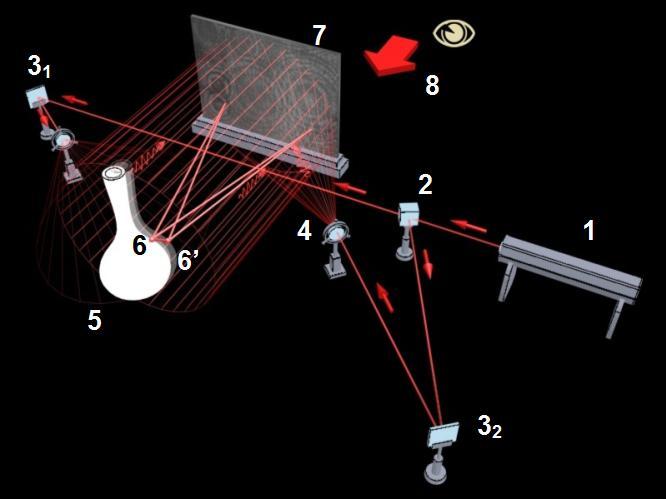Recording of a Holographic Interferogram
3.1.1 Recording of a Holographic Interferogram
We will link up with the previous chart in Fig. 2–5 where a classical hologram recording was explained. If we put the object back to its original position and take its record on the hologram so that during the first exposure we record the holographic state of the object before deformation (the selected point of object 5 is in position 6’) and during the second exposure we record the state of the object after deformation on the same hologram (the selected point of object 5 is in position 6), then after the development and illumination of the hologram with the reference beam we can observe through the hologram both images of the object, i.e. before and after deformation. These wavefronts interfere with each other, which is manifested by formation of interference fringes covering the object image 5 (Fig. 3–1). On the places where the deformation was larger, the number of interference fringes is larger as well, while the small deformations will be manifested in wider interference fringes.

1 – laser, 2 – beam splitter, 31, 32 – mirrors, 4 – objective, 5 – object, 6’ – selected point of the object before deformation, 6 – selected point of the object after deformation, 7 – hologram, 8 – direction of observation


